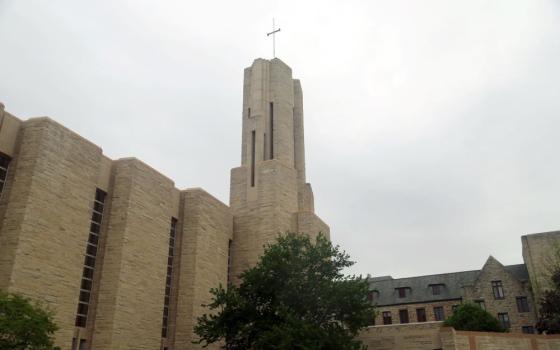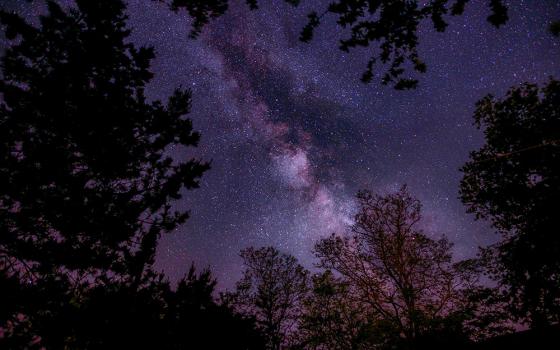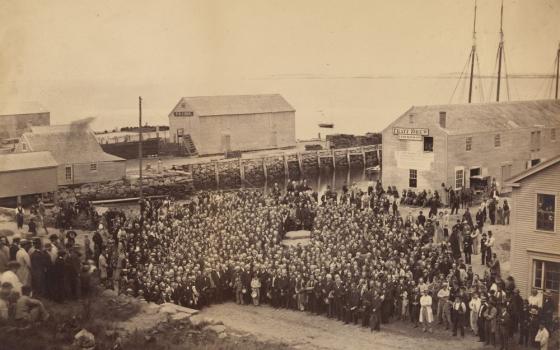By JOHN L. ALLEN JR.
Columbia, South Carolina
If churches hope to overcome the prejudices and misconceptions that often dog media coverage of religion, they’ve got to put their money where their mouth is, treating communications as an essential part of their mission.
That, at least, appeared to be the consensus from a panel on “Religion and the Media” in which I participated at the University of South Carolina on November 9.
Other panelists included the Very Rev. Philip Linder, Dean of Trinity Cathedral in Columbia, an Episcopalian community; Bobbi Kennedy of ETV, a public broadcasting service in South Carolina; Cecile Holmes, a veteran journalist and now professor in the university’s School of Journalism; and Charles Bierbauer, former CNN White House correspondent and now the Dean of the College of Mass Communications and Information Studies at USC.
Though each panelist had a unique take, there wasn’t much challenge to the basic premise that much media coverage of religion is, sadly, dreadful. Warthen set the tone by calling the press “clueless” about matters of faith.
“We cover religion like politics, and we cover politics like sports, so everything is about winners and losers, what the score is, rather than serious issues,” he said.
Warthern said that media outlets accent conflict within or between religious bodies, “without creating a matrix for understanding the norm from which the conflict is actually a departure.” He said that the “community journalism” movement had aspired to providing such a context, but it peaked just at the time that a wave of cutbacks and consolidations in the news business reduced the resources available for this sort of depth coverage.
In my brief remarks, I repeated what has become a mantra for me with regard to church communications. Given the enormous challenges, and given the unlikelihood that institutional resources will come to our aid, the fog of mythology surrounding religion will not lift until every believer comes to think of himself or herself as a “spokesperson,” challenging misconceptions as they arise at the dinner table, in the workplace, or in the local press.
Among the reasons why coverage of religion is often misleading, I made an off-hand remark that newsrooms are sometimes not highly “churched” places, suggesting that reporters lack personal experience of religious belief or practice.
That brought a challenge from Holmes, who cited a survey of American journalists to the effect that 65 percent are affiliated with churches or synagogues. Bierbauer told a story about his wife, Suzanne Schaeffer, an Associated Press correspondent who covered the visit of Pope John Paul II to Miami in 1987. When John Paul and Ronald Reagan appeared for a photo opportunity, Bierbauer said, his wife shouted out a question, and Reagan shut her down. She then asked if she could have a blessing, to which the pope smiled and responded, “Of course, a blessing for the journalists!”
Bierbauer drew his conclusion: “We’re not always unchurched,” he said, “and we’re not always unloved.”
Holmes made a strong argument for a greater investment of resources in media relations by religious organizations.
“Most international and national religious organizations do not have adequate communications staffs,” she said. “If you want better coverage, argue within your own communions on this point. It’s not just a matter of lots of technology, but larger staffs. Often when the budget gets cut, communications is among the first to go.”
Holmes said she believes many young reporters are interested in covering religion, but they’re up against a culture that often doesn’t take religions seriously. She pointed to a Rockefeller Institute study in the 1980s, which found that American analysts tracking pre-revolution Iran had studied munitions, banking, communications, finance, education, and so on, but no one had bothered to keep an eye on religion.
“That’s what we need to work against,” she said.
Bierbauer cited a series of factors working against media coverage of religion:
•tThe perceived need to cover everything, all the time, in a 24/7 news environment;
•tThe way news organizations treat religion reporting as a niche rather than a part of routine coverage;
•tThe tendency of journalism to “take too many shortcuts,” so that a news agency will cover religion by tying it, often artificially, to some other breaking story – such as the attempt to read the resignation of Protestant minister Ted Haggard as essentially a footnote to the 2006 elections.
Linder, a former Catholic, expressed sympathy for the difficulties reporters and editors face, but said in his experience media coverage of religion tends to gravitate toward extremists and matters of conflict, so that he never really feels like he’s talking about something essential when he deals with the press. (Linder was, in part, reflecting recent experience with coverage of debates within Episcopalianism over the consecration of an openly gay bishop).
“Those of us in the sane middle have to fight for our voice,” Linder said.
Kennedy raised the provocative question, which unfortunately we never really got around to answering, of how changes in technology and the emergence of the so-called “new media,” such as pod-casts, the Internet, multi-media outlets, and so on, are reshaping the way religion is covered – and who covers it. She suggested that these trends are calling upon church groups to find a new language.
In general, the discussion seemed to confirm that journalists and believers actually want to understand one another, but that enormous institutional and cultural factors often work against that aim. Both news organizations and religious bodies will need to be more systematic, and more determined, about understanding the other if that calculus is to change.




